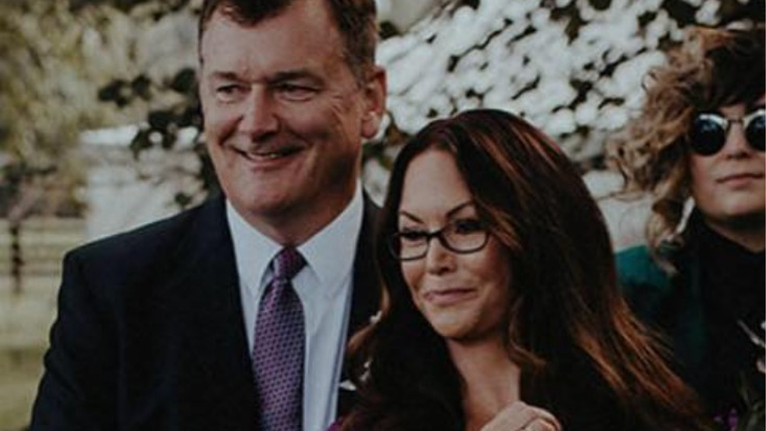Stroke is the fifth-leading cause of death in the United States, a leading cause of long-term adult disability and it affects more than 795,000 people a year, according to the American Stroke Association. Some patients may need months or years of therapy, though it’s encouraging to know many can relearn how to speak, walk, read and eat independently.
While at home, getting ready to go out with friends, Stephanie experienced an intense headache unlike any other she’s ever had, and immediately knew something was wrong. With the help of her fiancé Bryan, she called 911.
The key to surviving a stroke, like Stephanie did, is getting immediate medical attention. Afterwards, a survivor’s recovery requires specialized rehabilitation, provided by multiple healthcare professionals.
Stephanie spent 30 days in intensive care at UC Medical Center, and another 30 days at Daniel Drake Center for Post-Acute Care, is a member of UC Health, and the region’s premier provider of long-term care, including specialized rehabilitation for stroke recovery.
Stephanie’s stay at Daniel Drake Center was followed by weeks of in-home and outpatient therapies, and she was bedridden for 24 days as a result of her brain injury. The beginning of her physical therapy journey started when one of her therapists, Kate Jones, helped her walk without a walker for the first time—which helped her start gaining strength and mobility, and improve overall functions.
The Key to Stroke Rehabilitation: Early and Often
Starting the right stroke rehabilitation program as soon as possible may help survivors recover more fully, says the American Stroke Association This can begin in the hospital as soon as a patient is stable, and will continue at a rehabilitation center or at home. Rehabilitation usually includes speech, physical and occupational therapy, as described by the Centers for Disease Control and Prevention.
- Physical therapy uses exercises to help patients relearn movement, balance and coordination skills they might have lost because of the stroke.
- Speech therapy helps people who have problems producing or understanding speech and helps improve swallowing function and cognition.
- Occupational therapy focuses on improving daily functional activities, such as eating, drinking, dressing, bathing, reading and writing.
During rehabilitation sessions, highly skilled therapists will administer training exercises to improve stroke-related impairment, depending on a patient’s symptoms.
Common symptoms after stroke that can improve with physical therapy include:
- Partial or complete weakness on one side of the body.
- Vision loss.
- Aphasia (loss of spoken language and ability to comprehend).
- Slurred speech.
- Difficulty swallowing.
- Cognitive impairment (memory, attention, processing speed, reaction time).
- Depression and anxiety.
“The long-term goal of all therapy is for the patient to regain the abilities that are lost. When started early, therapy can improve function and independence of stroke survivors,” Oluwole O. Awosika, MD, MSCR, FAAN, neurologist at the UC Gardner Neuroscience Institute and assistant professor in the Department of Neurology and Rehabilitation Medicine at the UC College of Medicine said.
For Stephanie, age 53, getting to the emergency room as soon as she did and the immediate therapy that followed has given her a new lease on life.
“I was not expected to live. If not for my neurosurgeon, Dr. Prestigiacomo, and the wonderful care from the medical team, I wouldn’t be here today. I got to celebrate my granddaughter’s first birthday while I was in rehab,” Stephanie said.
Like many stroke survivors, Stephanie relied on occupational therapists to relearn activities of daily living (ADL). Occupational therapists utilize devices that can help stroke survivors with tasks such as dressing, toileting, eating, walking and communicating.
Therapy sessions are comparable to the intensity of world-class athletes' training—multiple times a day, seven days a week. Relearning how to do some daily tasks requires thousands of repetitions to make improvements.



